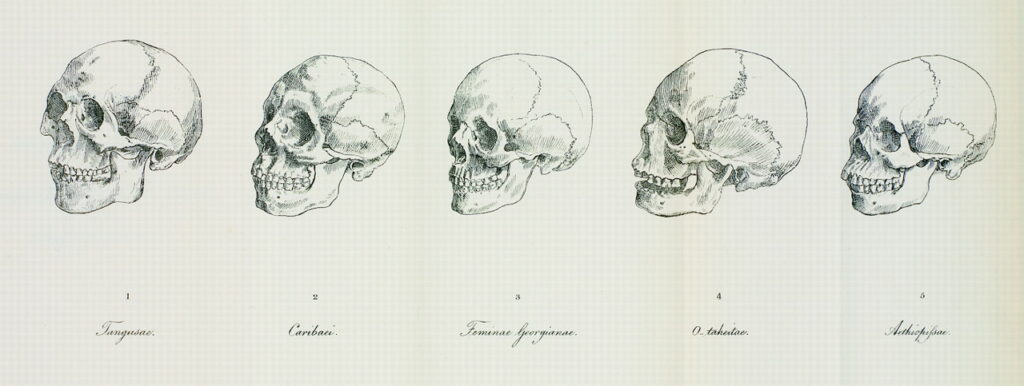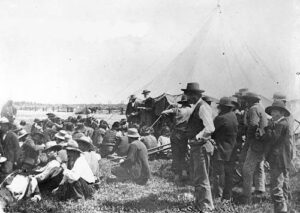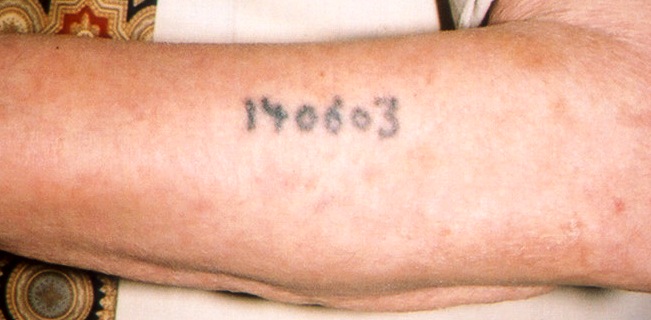Chapter 11. Race and Ethnicity
11.3 Theories of Race and Ethnicity
Theoretical Perspectives
Issues of inequality and discrimination based on race and ethnicity can be observed through the paradigms of positivism, critical sociology and interpretive sociology. As discussed throughout this textbook, the choice of perspective affects the type of analysis sociologists can provide.
Positivism

In the framework of positivism, race and ethnicity are regarded as social facts, that is, they are observed, examined and explained as measurable variables independently of historical context, power relations, or subjective experiences. Early positivist approaches to race and ethnicity sought biological determinist explanations of racial differences, often based on using hereditary physiological characteristics such as skin colour, skull shape, and facial or skeletal features to categorize people into biological races and then to predict characteristics of behaviour, intelligence, ability, personality and social forms from these. More recent biological determinist arguments, such as Murray and Herrnstein’s The Bell Curve (1994), attempt to link race and intelligence genetically by showing that “Blacks” (Murray and Herrnstein, 1994; Sarich and Miele, 2004) and “Hispanics” (Richwine, 2009) score lower on IQ tests than “Whites.” These studies are deeply flawed because they are unable to define their key variable, “race,” genetically, (see discussion of race and genetics above), and rely on social attributions of race to make their biological argument. They also mistake IQ tests as measures of innate mental ability, when these have shown to vary based on socio-economic status as well as the specific skill sets they test (Turkheimer et al., 2003). Nevertheless, as a type of positivist knowledge, they are still used to advocate certain courses of action in public policy decision making, from limiting immigration of racialized groups to reducing funding for educational programs and social supports in marginalized communities (Murray and Herrnstein, 1994; Richwine, 2009).
However, positivist approaches can also describe racial and ethnic differences based on sociological variables. For example, racial minorities are overrepresented in the criminal justice system (see Chapter 7. Groups and Organizations). Statistics can be used to determine whether this is due to biological or social differences. In fact, the research indicates that when social variables like socio-economic status are controlled for, the impact of race on crime rates diminishes or disappears (Wortley, 1999). Blau and Blau’s (1982) study of the data showed that the high rates of violent crime among Blacks in American cities had nothing to due with biological characteristics, but was an expression of social inequalities between Blacks and Whites. Specifically they showed that neither poverty (on its own), nor region, nor racial characteristics could strongly account for rates of violent crime when the index of inequality was controlled for. In other words, the degree of socio-economic inequality within a jurisdiction accounted for the variability of crime rates. Other studies (Roberts and Gabor, 1990) have shown that crime rates among Blacks are much higher in the United States than they are in Africa, again indicating the social rather than biological dimension of the issue. When social variables can be identified as the cause of racial differences in crime rates, poverty and IQ tests, a different set of policy options opens up.
Within the positivist framework, structural functionalists generate explanations of racial differences in terms of their role in maintaining social order. One plausible argument is that racial and ethnic inequalities must have served an important function in order to exist for as long as they have. This argument, of course, is problematic. How can racism and discrimination contribute positively to the social order of society? Sociologists who adhere to the functionalist view argue that racism and discrimination do contribute positively, but only to the dominant group. Historically, it has indeed served dominant groups well to discriminate against subordinate groups. Slavery was beneficial to slaveholders; racialized labour is cheaper and provides competitive market advantages for employers. Holding racist views can benefit those who want to deny rights and privileges to people they view as inferior to them, but over time, racism harms society and becomes dysfunctional. Outcomes of race-based disenfranchisement — such as poverty levels, crime rates, and discrepancies in employment and education opportunities — illustrate the long-term (and clearly negative) results of colonialism and racism in Canadian society.
Apart from the issues of race, ethnicity, and social inequality, the close ties of ethnic and racial membership can be seen to serve some positive functions even if they lead to the formation of ethnic and racial enclaves or ghettos. The close ties promote group cohesion, which can have economic benefits. For example, recent immigrants can find race and ethnicity to be a ready-made source of belonging. This allows them to use community contacts to find their footing in a new society and pursue employment. They can also have political benefits in the form of political mobilization for group recognition, services, or resources by different communities. The Truth and Reconciliation Commission for Indigenous residential school survivors or the policy of multiculturalism are examples. Finally, the close ties of racial or ethnic groups also provide cultural familiarity, positive reinforcement and emotional support for individuals who might otherwise feel alienated by or discriminated against by the dominant society.
Critical Sociology
Critical sociological theories are often applied to inequalities of gender, social class, education, race, and ethnicity. They generally take a macro or global level, historical approach to understanding the formation of relations of power based on ethnicity and race. They aim to explain the social context in which particular experiences and disadvantages based on race or ethnicity are embedded. How did racial and ethnic inequality form in the first place, how does it structure society today, and in which direction is it going in the future?

A critical sociology perspective of Canadian history would examine the numerous past and current struggles between the White Anglo-Saxon Protestant (WASP) ruling class and racial and ethnic minorities (Porter, 1965), noting specific conflicts that have arisen when the dominant group perceived a threat from the minority group. Modern Canada itself can in fact be described as a product of internal colonialism. While Canada was originally a colony itself, the product of external colonialism, first by the French and then the English, it also adopted colonial techniques like the Indian Reservation system internally as it became an independent nation state. Internal colonialism refers to the process of uneven regional and social development by which a dominant group establishes its control over existing populations within a country. Typically it works by maintaining segregation among colonized subjects, which enables different geographical distributions of people, different wage and educational levels, and different occupational concentrations to form based on race or ethnicity. Institutional racism, discussed earlier in this chapter, is one means by which this segregation and unequal treatment has been institutionally organized and perpetuated.
For critical sociology, addressing the issues that arise when race and ethnicity become the basis of social inequality is a central focus of any emancipatory project. They are often complex problems, however. Feminist sociologist Patricia Hill Collins (b. 1948) developed intersection theory to analyze the combined effects of race, class, gender, sexual orientation, disability and other attributes on inequality. Intersection theory proposes that these sources of inequality cannot be examined independently because they compound their effects (1990). When race is examined sociologically, it can be shown to provide advantages and disadvantages, but it is important to acknowledge the way racial inequality is influenced, for example, by gender, class or disability. Multiple layers of disadvantage intersect to create the way race is experienced.
For example, if sociologists want to understand the effects of discrimination, they must understand that the discrimination that affects a White woman because of her gender is very different from the layered discrimination that affects a poor Asian, Indigenous or Black woman, who is affected by stereotypes related to being poor, being a woman, and being part of a visible minority. In fact labour market discrimination is both gendered and racialized. Block, Galabuzi, and Tranjan (2019) show that in 2016, “Racialized women earned 59 cents for every dollar that non-racialized men earned, while non-racialized women earned 67 cents for every dollar that non-racialized men earned. Little progress was made in reducing this gap over the 10-year period [between 2006 and 2016].”
A relatively recent development in the formation of racial and ethnic difference and inequality has been the prominence of identity and identity politics as ways in which people understand themselves, as opposed to the universal properties of “humanity” that were the focus of earlier class struggles and civil or human rights movements. People increasingly define themselves less by what they do (for a living, etc.) and more by what they are, or what they imagine themselves to be. Manuel Castells (2010) defines identity as “the process by which a social actor recognizes itself and constructs meaning primarily on the basis of a given cultural Attribute or set of Attributes.” He contextualizes this historically in terms of the dramatic social transformations of globalization and technological advancement. As he puts it, “in such a world of uncontrolled, confusing change, people tend to regroup around primary identities…. In a world of global flows of wealth, power, and images, the search for identity, collective or individual, ascribed or constructed, becomes the fundamental source of social meaning.” As discussed earlier, race or ethnicity are sources of these cultural attributes, sometimes imposed on groups and sometimes chosen or actively invented. Either way, Castells argues that identity is “becoming the main, and sometimes the only, source of meaning in an historical period characterized by widespread destructuring of organizations, delegitimation of institutions, fading away of major social movements, and ephemeral cultural expressions” (Castells, 2010).
Interpretive Sociology
Interpretive sociology focuses on how meanings are attributed to race and ethnicity. Race and ethnicity provide strong symbols as sources of identity. Interpretive sociologists propose that the symbols or representations of race, not the biology or genetics of race, are what lead to racism. The reality of race is therefore grounded in the meanings that individuals attach temporarily to their world. As such race relations are subject to continuous change. The question is, how do stable understandings of the meaning of race or ethnicity emerge?

Part of the answer has to do with the process of representation. Race and ethnicity acquire new meanings when they are re-presented in the form of discourses and imagery for collective consumption. Representation refers to the process by which meaning is produced and circulated in a society through the use of language, signs and images to stand in for, or re-present, things (Hall, 1997). In The Imaginary Indian (1992), Francis describes the representations of Indigenous people that emerged during the period of colonization and have continued to operate up until the present day. Through 19th century painting and photography, and later through travelling road shows and film, Indigenous people were alternately presented as a vanishing people — noble, romantic, ethnographic, exotic, but also childlike and gullible — and a lawless people — drunkards, brawlers, and sexually licentious. Similar types of representation have been used to characterize other minority groups in Canada. The Chinese, for example, were represented as a “yellow peril” or menace to Western Civilization and unsuitable for Canadian citizenship. JH Preston’s (1881) characterization was typical:
“Their civilization, such as it has been, is effete and worn out, and their intellect is of a low order, being confined to cunning, which we are told is the wisdom of the weak. They have the talent of imitation, but do not possess the inventive faculty. They never add to the little they will consent to learn” (J. Preston (1881), cited in Wang, 2006).
In the case of representing racialized and ethnic Others, a pattern of self/Other identifications and distinctions can be observed. The “normal” Western self is often assumed to be a bounded, independent, rational decision-making, reflexive agent, able to autonomously pursue their own goals. The non-Western self then becomes the opposite of these traits: unbounded, dependent, irrational, non-reflexive, unable to separate unique individuality from social role, and unable to independently pursue individual goals. Two versions of this that have existed in both the sociological literature and popular culture as products of colonialism are orientalism and primitivism. Orientalism is the practice of projecting a series of exotic characteristics onto “Asia,” “the East” or “the Orient” that are said to be the opposite of Western characteristics. Oriental culture is therefore represented as passive, static, ahistorical, secretive and despotic, while the oriental self is sensual, emotional, lethargic, rigid, irrational, and mysterious (Said, 1978). Primitivism is the similar practice of projecting “savagery” or premodern characteristics onto Indigenous and racialized peoples around the globe. Primitive cultures are represented as simple, timeless, collective, pre-scientific, ritualistic, fetishistic, bound by tradition, and ‘pure’ whereas the primitive self is instinctual, irrational, unindividuated, submerged in nature, sometimes “noble” and sometimes “childlike” (Diamond, 1969).
Minority groups have to contend with these representations in the formation of their identities. The process of identity formation can be seen as a way in which a stable understanding of self, others and place in society is established. However, as sociologists like Sen (2006) have observed, contemporary identity formation often involves navigating between numerous, sometimes divergent, identities and groups to which one belongs.
The same person can, for example, be a British citizen, of Malaysian origin, with Chinese racial characteristics, a stockbroker, a nonvegetarian, an asthmatic, a linguist, a bodybuilder, a poet, an opponent of abortion, a bird-watcher, an astrologer, and one who believes that God created Darwin to test the gullible (Sen, 2006).
This becomes more complicated with visible racial or ethnic characteristics. When one carries what Goffman (1963) calls a tribal stigma — a “mark” like skin colour which categorically distinguishes one from “the normals” — a whole set of social dynamics emerge to manage the effects of a discredited or “spoiled” identity. Stigma in this sense is an “attribute that is deeply discrediting.”
As Goffman points out:
an individual who might have been received easily in ordinary social intercourse possesses a trait that can obtrude itself upon attention and turn those of us whom he [or she] meets away from him, breaking the claim that his [or her] other attributes have on us. He [or she] possesses a stigma, an undesired differentness from what we had anticipated. (Goffman, 1963).
In other words, even though an individual might share many attributes of identity in common with the people with whom they are interacting, with a stigma these commonalities recede in significance and only the stigma comes to define the identity of the individual. Moreover, on the basis of this original “imperfection,” numerous other negative traits are imputed to the stigmatized person.

In Goffman’s micro-level analysis, this places a complex set of tensions on social interaction and makes the process of identity formation precarious. In normal company, the expectation is that everyone should be regarded as sharing the same status and be equally accepted. However the person with a racial or ethnic stigma is at the same time, and often unthinkingly, regarded by the others as “not quite human” and subject to various forms of discrimination. These are justified by informal “stigma-theories” that account for the person’s inferiority and the danger they represents. Therefore, in order to pass in ordinary company, the stigmatized person must try to “cheerfully and unselfconsciously accept himself [or herself] as essentially the same as normals, while at the same time he [or she] voluntarily withholds himself [or herself] from those situations in which normals would find it difficult to give lip service to their similar acceptance of him [or her]” (Goffman, 1963). The stigmatized individual has to somehow conceal or minimize their difference even though it is evident to everyone. As a result “shame becomes a central possibility, arising from the individual’s perception of one of his [or her] own attributes as being a defiling thing to possess” (Goffman, 1963).
Moving beyond the dynamics of face to face interaction, famed symbolic interactionist Herbert Blumer (1900-1987) suggested that explaining racial stigma and prejudice requires understanding the collective processes by which groups form racial images of themselves and others. Racial prejudice in society is less a matter of understanding the psychology of individual prejudice — a set of feelings that individual members of a group hold about another — and more a matter of understanding how a sense of group position and group identity vis-a-vis other groups is collectively defined. The dominant group is not so much concerned with the subordinate group per se but rather with establishing its social position with respect to the subordinate group. Racialized groups are “put in their place,” where they should stay. This jockeying for position among racial identities can not be explained from the point of view of the specific factors of psychology or personal experience that produce individual feelings of prejudice.
Similar to the concept of White privilege discussed earlier in the chapter, Blumer argues that four types of feeling characterize racial prejudice in the dominant group: “(1) a feeling of superiority, (2) a feeling that the subordinate race is intrinsically different and alien, (3) a feeling of proprietary claim to certain areas of privilege and advantage, and (4) a fear and suspicion that the subordinate race harbors designs on the prerogatives of the dominant race” (Blumer, 1958). The formation of these types of feeling is fundamentally a collective process. They give the dominant group a shared orientation and identity that is not given by the separate, individual feelings and views of its members.

The key element of this process for Blumer is that it is based on the circulation of abstractions about racial groups as a whole — the Native Indians, the Chinese, the Jews, etc. — rather than on direct experiences or face to face interactions. Therefore even if an individual of a dominant group has never personally met a member of a subordinate group, they know where they stand with regard to them. Blumer draws four implications from this: (1) racialization and social positioning depend on collective processes in the public arena where representatives and agents of the dominant group are able to define subordinate groups in the abstract; (2) the definitions need to carry heightened significance to be effective, and therefore the importance of big events, like the widely circulated images of spectacular police violence against Blacks and the subsequent street protests, become central in the formation of racial images; (3) race prejudice does not emerge organically from a multitude of isolated experiences and attitudes, but under the impact of spokespersons and influencers with standing, prestige, and authority who hold public attention; (4) race prejudice is also a site of opportunity for strongly organized interest groups to promote their special interests and align them with the advantages already enjoyed by the dominant group. “Hence, [interest groups] may be vigorous in seeking to manufacture events to attract public attention and to set lines of issue in such a way as to predetermine interpretations favourable to their interests” (Blumer, 1958).
Blumer concludes that race prejudice will become prevalent and impervious to change in societies where the social order is rooted in the hierarchical social positioning of racial groups. He described the Black/White relationship in the southern United States as an example. In places where social positioning is not entrenched, race prejudice will be much more “variable and intermittent” (Blumer, 1958). He felt that the Jew/Gentile relationship in post-WWII Western Europe and North America was an example. He argues that race prejudice and social positioning are only kept alive when influential spokespersons and elites perpetuate strong racial images and narratives. Where significance is withdrawn from racial imagery in public discourse, or where discourses of racial harmony dominate, racial prejudice tends to diminish.
Media Attributions
- Figure 11.12File:Blumenbach’s five races.JPG by Johann Friedrich Blumenbach, In the 1795 Treatise on “De generis humani varietate nativa” (Tab II), via Wikimedia Commons, is in the public domain.
- Figure 11.13 David Laird explaining Treaty 8 Fort Vermilion 1899 – NA-949-34 from the Glenbow Museum, via Wikimedia Commons, is in the public domain.
- Figure 11.14 The Heathen Chinee in British Columbia by Canadian Illustrated News, (1879), via the Wallace B. Chung and Madeline H. Chung Collection, Rare Books and Special Collections, University of British Columbia Library (CC-GR-00009). Used with permission.
- Figure 11.15 Auschwitz survivor Sam Rosenzweig displays his identification tattoo by Rudy Purificato, via Wikimedia Commons, is in the public domain.
- Figure 11.16 Herbert Blumer from the American Sociological Association. Used with permission.

